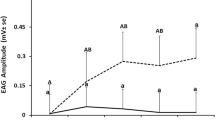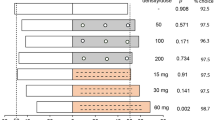Summary.
Varroa reproduction is closely synchronized to the development of its host. In this study we present a new bioassay for field and laboratory tests to evaluate host factors triggering Varroa oogenesis. Female mites deprived of feeding activated oogenesis when perceiving larval volatiles. In laboratory assays the living L5-larva and pentane extracts of the larval cuticle had a clear activating effect. Wax and larval food did not elicit Varroa oogenesis. The activating components apparently are in the polar fraction of the cuticular volatiles. The consequences of this regulative mechanism for the host parasite relationship and prospects for further research are discussed.
Similar content being viewed by others
Author information
Authors and Affiliations
Corresponding author
Rights and permissions
About this article
Cite this article
Rosenkranz, P., Garrido, C. Volatiles of the honey bee larva initiate oogenesis in the parasitic mite Varroa destructor . Evolutionary, Mechanistic and Environmental Approaches to Chemically-Mediated Interactions 14, 193–197 (2004). https://doi.org/10.1007/s00049-004-0278-0
Received:
Accepted:
Issue Date:
DOI: https://doi.org/10.1007/s00049-004-0278-0




